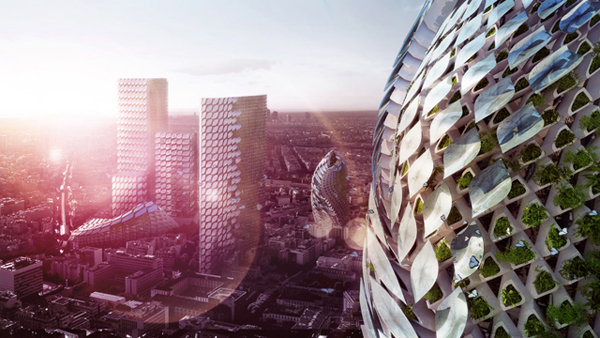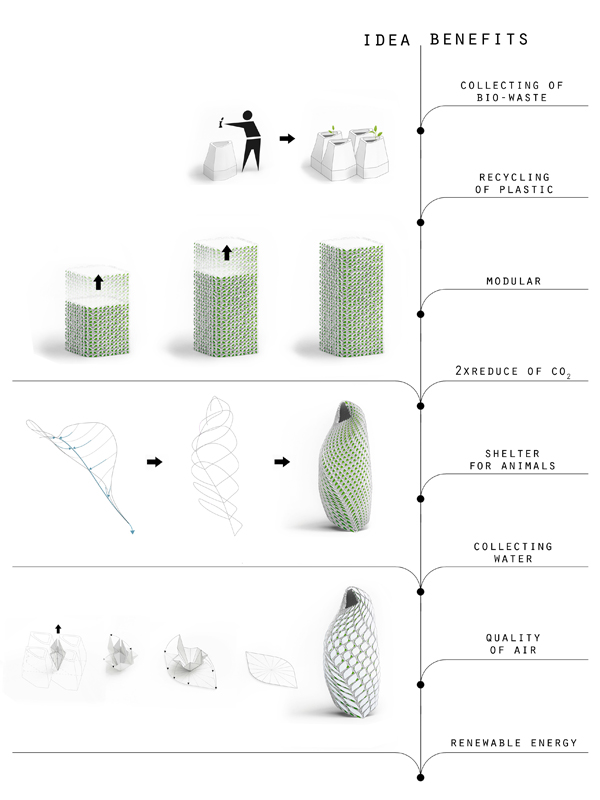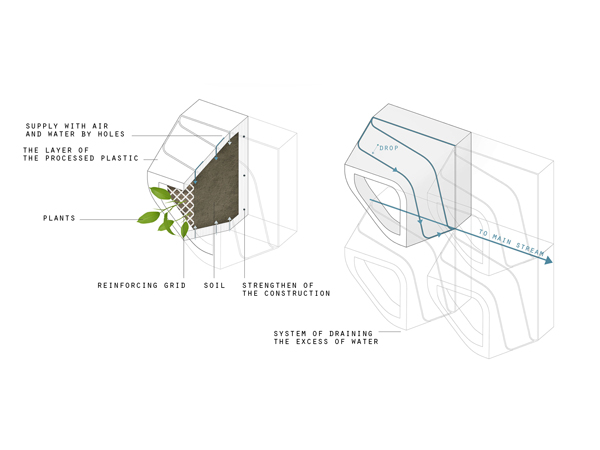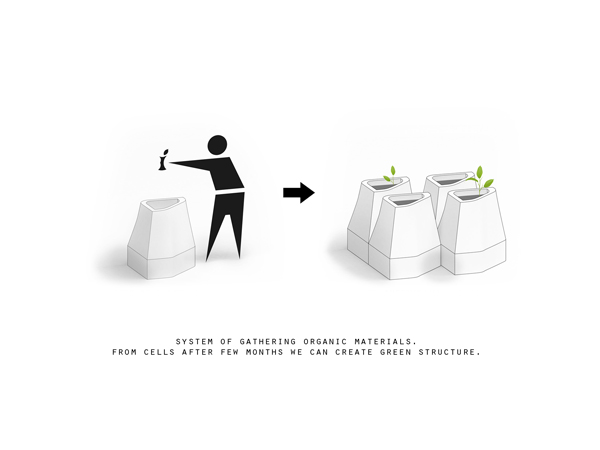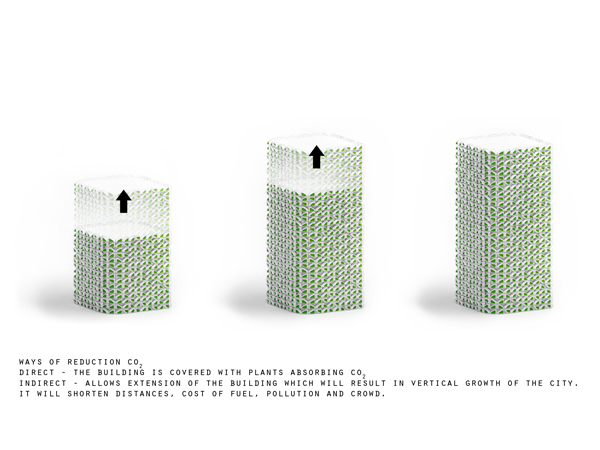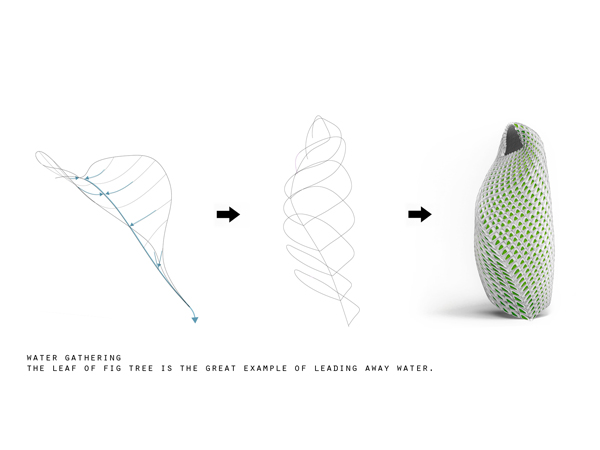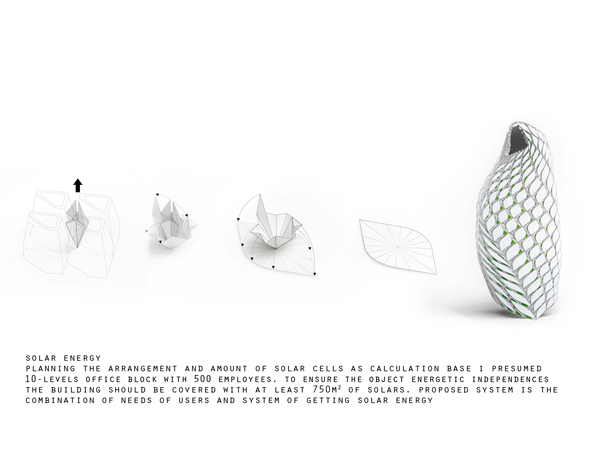The Ecological Wall is a project designed by Polish architecture student Stanislaw Mlynski for an international competition organized by National Taipei University of Technology (NTUT) School of Architecture.
“I proposed to create structural wall using organic waste containers. I believe that arrangement of elements, as well as their shape have potential to create shelters for animals, gather water, reduce CO2 . The solar system has the aim to ensure energetic independence.
The subject of my interest was every -existing or built in the future- useless, dirty, not-adapted city wall. As in nature every organism consist of huge amount of repetitious cells, which ensure reliability, I decided also to make up a universal modular system, which will allow to transform industrial building, grey skyscrapers, office blocks or even typical fences in green ecosystems. Such system would also provide with possibility to create buildings. On every step of the project I was seeking inspirations in nature, because to my mind it is the master of OPTIMIZATION and usage of resources from surrounding (to which it is trying to adjust).
Organic waste are nearly 40% of our dust bins and composting is one of the easiest and cheapest ways of recycling. I propose system of gathering waste such us grass cuttings, tea bags, ripped cardboards, paper, fruit cuttings and much more, based on delivering new and collecting full containers – cells, which after changing sewages to soil are going to be ecological structure. Shape of every cell is the result of combining 2 functions: container for waste and the construction element of the building. Such wall can be a ground for plants which will reduce the amount of CO2 as well as have positive influence on microclimate. Thanks the tectonic of walls we can collect water and what is more birds would find the shelter there. Solar system is the combination of users’(sun light) needs and system of getting solar energy. I had an idea to let everyone get involved in very simple but relevant way in creating our eco- cities.”

